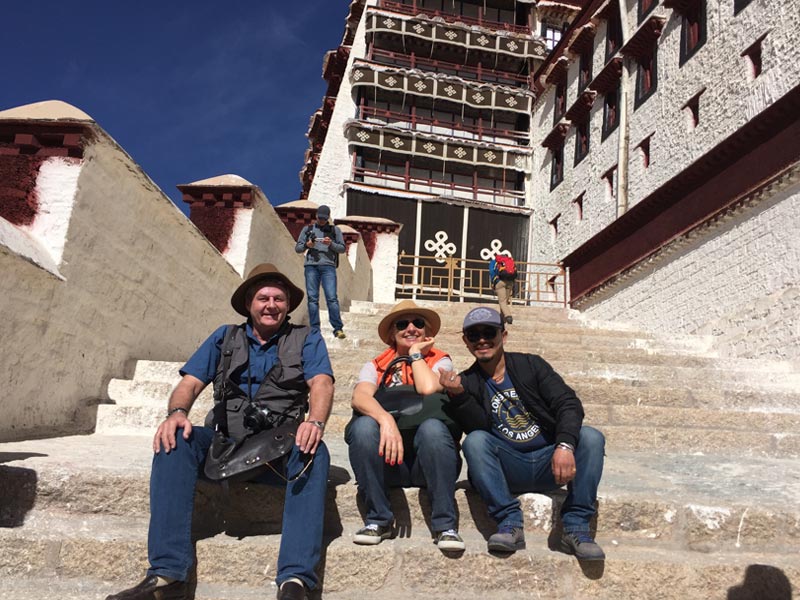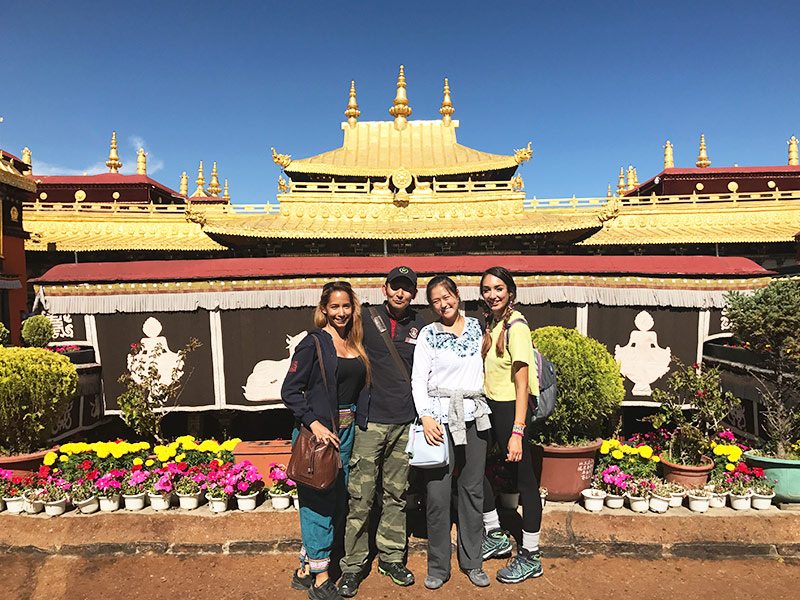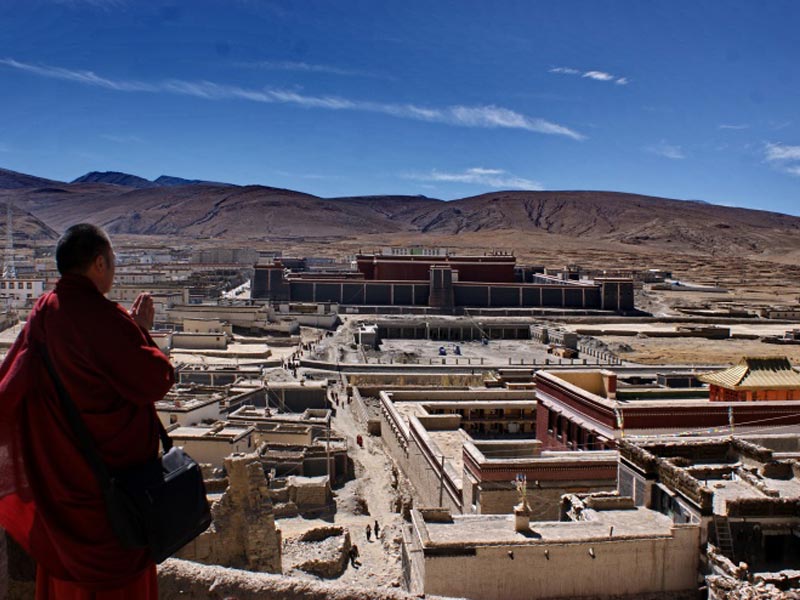Planning a tour of Tibet usually means you will have to plan for getting altitude sickness when you arrive. Almost everyone experiences this to some degree, but there are ways that you can reduce your own risk of altitude sickness on your trip to Lhasa and Everest Base Camp. Here we have several options for helping you to reduce the chances of you getting altitude sickness when you arrive in Tibet, and how to manage it more effectively.
Enter Tibet from China instead of Nepal
It is a simple fact that, the more gradual your ascent to higher and extreme altitudes, the less likely you are to feel the effects of altitude sickness as you travel. This means that, if you really want to be able to reduce the chances, you need to enter Tibet from mainland China, instead of from Nepal.
Entry from Nepal means taking the road from Kathmandu to Gyirong Port, where you will cross the border to Gyirong Town. Within 48 hours of leaving Kathmandu (1,400m), you will climb to more than 4,300 meters. An ascent that quick will almost certainly leave you feeling altitude sickness.
The route from mainland China has more opportunity to acclimatize and ascend more gradually, giving you a better chance of not feeling altitude sickness as much.
Acclimatize Yourself for 2 Nights in Xining and Take the Xining-Tibet Train
Entry to Tibet from mainland China can be done by flight direct to Lhasa. However, this will not give you a chance to acclimatize before you get there, and is no better than entering from Nepal. Instead, a more gradual route is possible via train.
While the trains from most of China ascend from low altitudes close to sea level to the 3,656-meter altitude of Lhasa, there is one train that starts at a much higher altitude. With most of the longer trains from mainland China to Lhasa, you will still feel the effects of altitude sickness more heavily when you arrive, as you are traveling in an oxygen-rich environment on the train, which does not aid in acclimatizing slowly. The train from Xining is the only train that starts its journey at an altitude above 2,000 meters.
When ascending to high altitudes, it is recommended to stop at an intermediate altitude of around 2,000-3,000 meters for at least 24-48 hours. This allows you to acclimatize to the lower altitude properly, which can aid in easier acclimatization to the altitude of the plateau. Xining lies at an altitude of 2,275 meters above sea level, and is the perfect place for intermediate acclimatization when traveling to Lhasa. A stop of two nights in Xining, the capital of Qinghai Province, will allow you to acclimatize to that altitude, reducing the risk of altitude sickness when you arrive in Lhasa. You can then take the 21-hour train from Xining to Lhasa, which has some of the best scenery along its route.
Add One Night at Sakya Instead of Heading for EBC via Shigatse
Once you arrive in Lhasa, at 3,656 meters, you will normally spend a couple of days in the city, acclimatizing to the higher altitude and visiting the famous sites of the city. For those heading off to visit the Everest Base Camp (EBC), the change in altitude is once again rather high, rising to 5,150 meters at the base camp itself. The normal tour takes you from Lhasa to Shigatse, at 3,845 meters, and then on to EBC the following day, rising another 1,255 meters in a few hours. This can sometimes mean that you may experience some of the effects and symptoms of altitude sickness at EBC, where you stop for the night.
A good way to counter that, if you do not want to ascend so quickly, is to add an extra day, and take the road to the famous Sakya Monastery on the way to EBC. This allows you to acclimatize to the altitude of Sakya, before reaching EBC. Normally, it is recommended that you should only ascend by around 400-500 meters per day, at most, and sleep at an altitude below the highest altitude you reached for the day. Sakya Monastery lies at an altitude of 4,310 meters, just 465 meters higher than Shigatse. This means that, after you have rested for the night near Sakya, you will only ascend by 790 meters to reach EBC, which can greatly reduce the chances of getting altitude sickness at Mount Everest.
The most recommended route is: 9 Days Lhasa to Everest Base Camp in-depth Travel
Stay Overnight at Old Tingri Instead of EBC
Many tours of Tibet that include EBC have a stopover at the base camp, in the Rongbuk Monastery guesthouse, or the tent guesthouses on the site itself. While you will be sleeping at a lower altitude than you reached throughout the day, the altitude difference is minimal, and it is actually better to stay in the nearby town of Old Tingri instead. At an altitude of just 4,390 meters, around 710 meters lower than EBC, you can rest assured that you are highly unlikely to feel any of the effects of altitude sickness by the time you get there to rest.
Not only is the altitude low enough for you to not feel much altitude sickness, but you also have an amazing view of the range of the Himalayas, including Mount Everest and some of the other highest mountains in the world. And the accommodation is much more comfortable than at EBC, with better medical care should you need it.
The most recommended route is: 12 Days Trekking Tibet Everest Base Camp: from Tingri to EBC via Ra-chu Valley
Tips for Avoiding Altitude Sickness
There are a number of ways to help you avoid the worst of the symptoms of altitude sickness, and possibly prevent it altogether. Using the recommendations we have already given in conjunction with some handy local tips on acclimatization, you can reduce the risk to something close to negligible for your trip to Tibet.
Arriving in a new city usually prompts people to get out and explore immediately. At high altitudes, this is not recommended, and you should spend time resting and allowing your body to adjust properly before heading outside to roam the restaurants and teahouses of Lhasa. Allowing your body to rest will help to speed up the adjustments that your body will need to make to help you get over any effects of altitude sickness.
Exertion is a major factor in altitude sickness, and you should try and avoid any severe and extreme exertions until you are properly acclimatized. And even then, you should take care and take more time in doing things such as trekking and climbing up to the Potala Palace. Keep your strenuous activity for later on in your trip, when you will be better able to do it after acclimatizing.
Hydration is another great tip to help reduce altitude sickness in Tibet. While it may be cold, the altitude can increase your rate of dehydration, which means you need to drink lots more water to stay hydrated properly. A good sign of dehydration is a tense headache, or darker urine when you go to the toilet. If you feel very dehydrated, hydrating salts can help increase your hydration faster.
Eating well is another positive action that can help you get over any effects of altitude sickness faster. High protein foods, such as lean red meat, organic green vegetables, and noodles, are ideal for aiding in acclimatization, as they help the body make more red blood cells, which are needed for the body to adjust. Maintain a good protein-rich diet for the duration of your trip, and you will definitely feel the good effects.
Conclusion
Traveling to a high-altitude location such as Tibet does not mean you will be guaranteed to get altitude sickness. Some people find that they do not feel the effects at all, even when flying into Tibet from mainland China. However, not everyone is the same, and even those that did not feel it the first time, often feel it on subsequent visits. Altitude sickness is not dependent on your level of fitness and health either, and is indiscriminate in who it hits. Almost everyone feels this when they arrive. By simply following our guidelines on getting to Tibet and using the handy hints we have provided, you can help to reduce your chances of getting altitude sickness, and better enjoy your time on the Roof of the World.
.jpg)













0 Comment ON "How to Plan a Tibet EBC Tour with the Least Altitude Sickness"